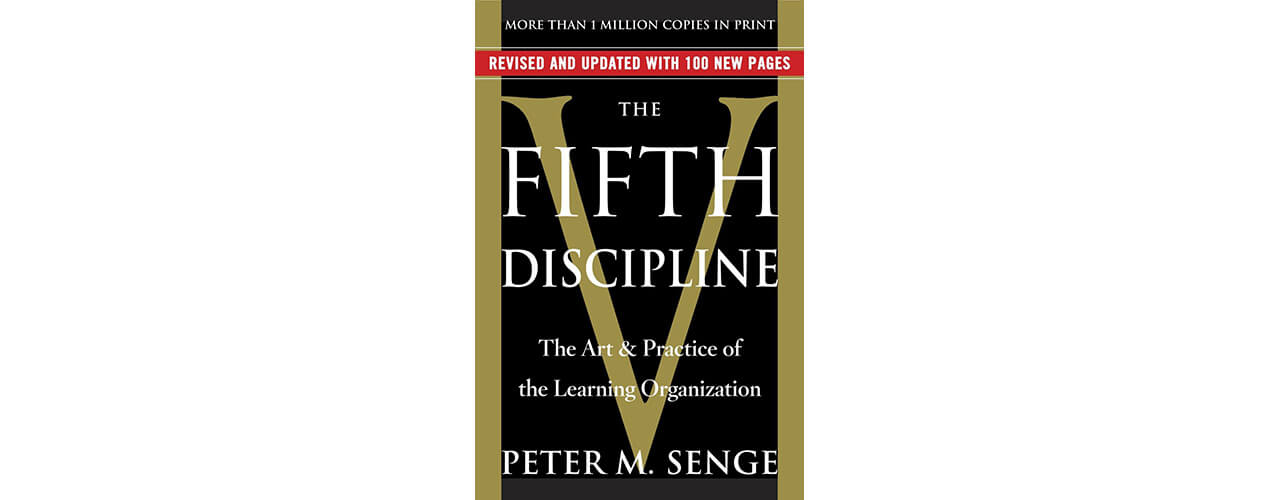- Authors: Peter M. Senge
- Publication date: 2006
- Publisher: Random House Business Books
- ISBN: 9780385517256
Peter Senge’s book is a classic. It is an important book. The subtitle might set you off in the wrong direction though. It’s not about the classical notion of learning. Maybe Senge should have used ‘adaptive organization’ instead of ‘learning organization’. The book is about sustainable success as a business.
Although somewhat older already it is still very relevant for the sad reason that business leaders have not put much of the book’s learning into practice, although it was an extremely popular book when it was first published.
There is a lot of wisdom in the book that helps you understand the problems of modern organization in becoming more adaptive
It’s not an easy book
When I started this review, I look at some comments it got on Amazon. Although most were 4 star reviews there were a number of 1 and 2 star reviews as well. One common remark was that some found it hard to read. It is a little too easy to just blame the book and the writer for that and dismiss the book for this reason. But it is not an easy book to read. I read many parts multiple times, and I still plan to read the entire book for a second time. It is not an easy subject but while reading it I got this feeling I was on to something important.
Systems Thinking: The Fifth Discipline
Although Systems Thinking is just the fifth of the five disciplines discussed, it is also the most important one. The other disciplines build on this foundation. Systems Thinking is all about understanding that you cannot understand the whole from its parts. While that might sound fluffy, Senge makes it very clear from the start how important this is. As a reaction to complexity we tend to break complex issues into smaller parts. But as soon as we do we lose the overview of the whole. A good example of this is the silo structure still dominant in our organization. While it once had its function in a more stable, predictable environment, in today’s complex world it just causes us to lose the overview of what is really going on in the organization. The local optimization of the parts, cause us to sub-optimize the whole because we are not able to see the effects and consequences of our actions beyond our own silo. Silos are an artificial breakdown of the organization because in a complex system all parts are related, no matter how thick you build the walls between the silos/departments.
Why is this relevant? One consequence is, it severely limits the ability of the organization to successfully change course. A second one is the danger that all silos report in the green while the organization as a whole is in serious trouble. This happened to several major banks in the period leading to the financial crisis of 2008. Nobody was capable of overseeing the risks for the entire organization of decisions of one part of the organization to invest in risky US subprime mortgage securities for example.
Systems Thinking helps you understand patterns of cause-effect loops that are surprisingly recognizable and that can seriously undermine the organization’s ability to become adaptive.
The core disciplines
The other four core disciplines map remarkably well to some more recent models like those of Dan Pink or Simon Sinek. Senge’s Personal Mastery can be mapped to Pink’s Mastery. Shared Vision can be mapped to Purpose. Autonomy can more or less be mapped to Team Learning as Senge sees the team as the base construct of modern organizations. It maps very well to recent of ideas of organizations being led by a higher purpose.
The only discipline that is less easy to map is Mental Models. This is perhaps the most important discipline after Systems Thinking. It is our mental models, our deeply entrenched ideas, beliefs and assumptions on how the world works, that allows us to make decisions quickly. Our mind uses the mental model to interpret information and to filter possible outcomes. And this filtering is also the biggest risk. Some new concept that doesn’t fit our mental model gets easily rejected or translated into something that does fit the model and therefore gets misinterpreted.
Our mental models, the fact that we are mostly not aware of it, and the fact that everyone has a different mental model, are perhaps the biggest obstacle for teams to come up with novel, out of the box solutions to complex problems.

